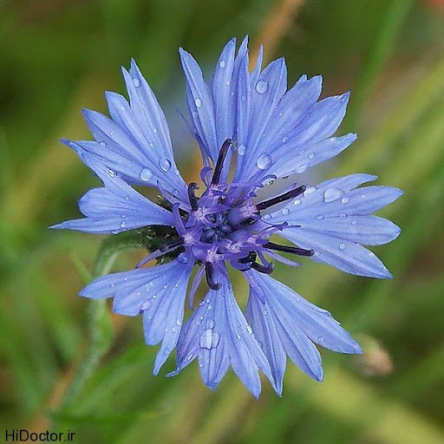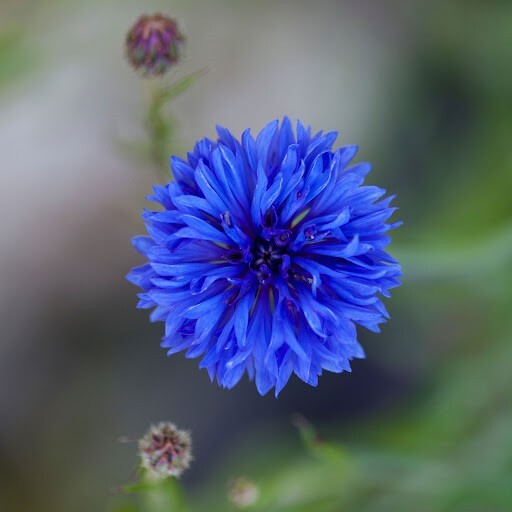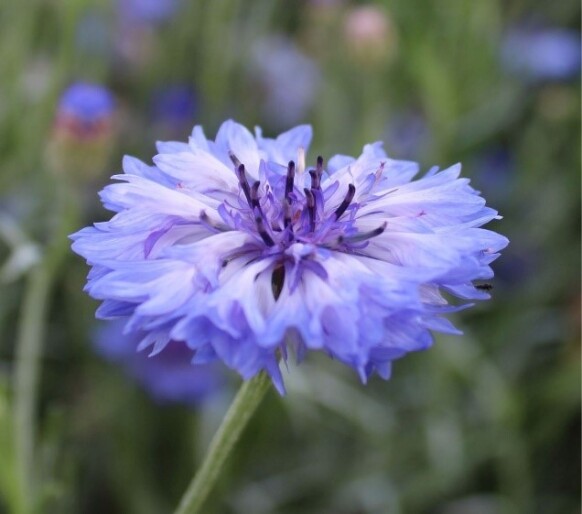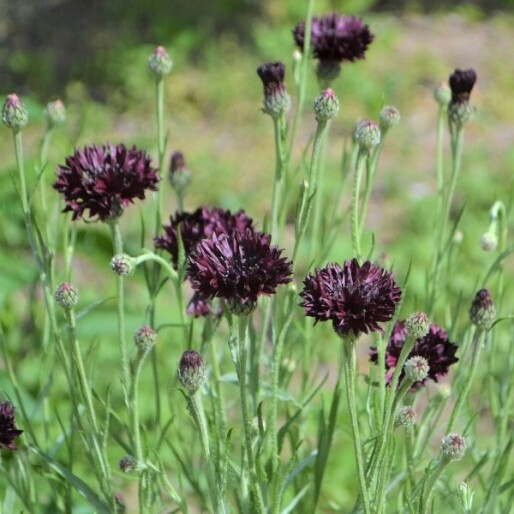
Tips for organic cultivation of Corn flower plant
(Centaurea cyanus)

Seedling Production
Direct sowing of Corn flowers in the field often results in irregular growth, as many seeds may sprout together, causing overcrowding. To ensure uniform growth with proper spacing, transplanting and growing the plants in a controlled environment is recommended. The seed cultivation process is as follows:
1. Soak the desired seeds in lukewarm water for 24 to 48 hours.
2. Plant the seeds in soft, moist soil at a depth of 0.5 cm and cover the edge of the pot with nylon to retain moisture.
3. Place the pot in a bright environment, but avoid direct sunlight, ensuring the temperature stays above 24°C.
4. When the surface of the soil is dry, moisten it with a sprinkler and keep it moist until the seeds sprout.
5. The blooming time for each flower and plant varies, ranging from one week to two months.
6. In spring, provide biofertilizers to the seedlings.
7. Water the wheat flowers regularly.
8. Avoid using fresh manure for planting seeds.
9. If fully decomposed manure is not available, compost can be used. Fertilization is crucial, as it helps the sprouts grow stronger.
10. Cornflowers should be planted in full sun and well-drained soil. Sow seeds directly into weed-free soil in the spring.
This approach ensures consistent and healthy plant growth.
How to Plant Cornflowers
Sow the seeds at a depth of 1.5 to 2 cm in wet, plowed soil and gently cover them with soil. During dry periods, ensure the soil is irrigated. Once the seedlings are large enough, space them 6 to 8 inches apart.
For optimal growth, use plenty of organic matter, including vermicompost, especially if the soil is heavy clay or light sandy soil with good drainage. Mix more organic matter with the excavated soil and fill the planting hole, watering well afterward.
______________
How to Care for Cornflowers
Water the plants regularly to keep the soil or compost moist during the spring and summer, which will help extend the flowering period. Remove any competing weeds while the plants are young and establishing.
Use liquid biological fertilizers every two weeks during the growing season to encourage bigger, better flowers. To further prolong the flowering period, remove faded flowers from the bushes.
______________
Planting
In mid-spring, transplant seedlings from the second pot to the main planting area, spacing them 20 to 25 cm apart. Alternatively, Cornflowers seeds can be directly sown in the main area during March, April, or autumn, depending on regional weather conditions.
______________
Climate
Cornflowersgrow in warm conditions, full sunlight, and normal soil moisture—ensure that the soil does not accumulate excess water.
______________
Soil
Well-drained sandy soil with a pH between 6.5 and 7.5 (alkaline) is ideal for Cornflowers.
______________
Transplanting Tips
It’s better to first sow the seeds in pots. Once the flower buds reach 5 to 8 cm, transfer them to the main ground for optimal growth.
Corn flower is an annual and resistant wild plant that grows easily and quickly and blooms in summer. This plant flowers in three months of summer and because it is annual, it completes its life cycle in one growing season.
Corn flower is a valuable source of antioxidants and contains essential oils, lipids, flavonoids, tannins and terpenes containing steroids. Its beautiful color is also used for natural colors.
Wheatgrass has the best growth and flowering in sunny places, and they need a fertile soil enriched with a lot of organic matter, which has a lot of moisture in spring and summer, so that the plant does not dry out easily, and the soil does not become waterlogged.
Types of Corn flowers
Corn flowers have different varieties and beautiful colors that can be seen in the pictures below.
سبد خرید



